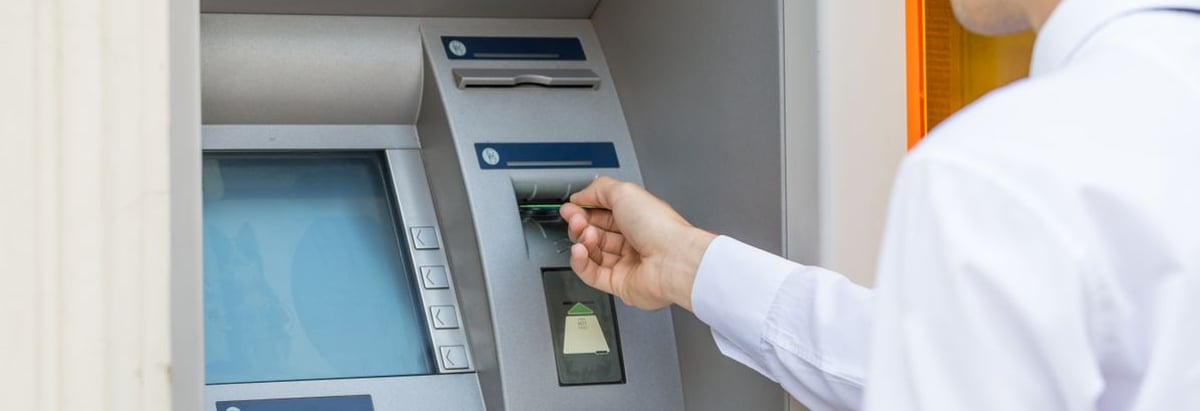What You Should Know About State Bank of India’s (NSE:SBIN) Liquidity

Want to participate in a short research study? Help shape the future of investing tools and receive a $20 prize!
As a large-cap stock with market capitalization of ₹2.3t, State Bank of India (NSE:SBIN) falls into the category of a major bank. As these large financial institutions revert back to health after the 2008 Financial Crisis, we are seeing an increase in market confidence in these “too-big-to-fail” banking stocks. Following the crisis, a set of reforms termed Basel III was enforced to bolster risk management, regulation, and supervision in the financial services industry. Basel III target banking regulations to improve the sector’s ability to absorb shocks resulting from economic stress which may expose financial institutions like banks to vulnerabilities. As a large bank in INR, SBIN is exposed to strict regulation which has focused investor attention on the type and level of risks it is subjected to, and higher scrutiny on its risk-taking behaviour. Investors should be more cautious when it comes to financial stocks given the different type of risk to which they are exposed. Today we will analyse some bank-specific metrics and take a closer look at leverage and liquidity.
View our latest analysis for State Bank of India

Is SBIN's Leverage Level Appropriate?
A low level of leverage subjects a bank to less risk and enhances its ability to pay back its debtors. Leverage can be thought of as the amount of assets a bank owns relative to its shareholders’ funds. Financial institutions are required to have a certain level of buffer to meet capital adequacy levels. State Bank of India’s leverage level of 15.75x is very safe and substantially below the maximum limit of 20x. This means the bank has a sensibly high level of equity compared to the level of debt it has taken on to maintain operations which places it in a strong position to pay back its debt in unforeseen circumstances. If the bank needs to firm up its capital cushion, it has ample headroom to increase its debt level without deteriorating its financial position.What Is SBIN's Level of Liquidity?
 As I eluded to above, loans are relatively illiquid. It’s helpful to understand how much of this illiquid asset makes up the bank’s total asset. Generally, they should make up less than 70% of total assets, which is the case for State Bank of India’s ratio at 56%. This is a reasonable ratio and suggests that slightly over half of the bank’s total assets are tied up in the form of illiquid loans, striking an appropriate balance between liquidity and interest income.
As I eluded to above, loans are relatively illiquid. It’s helpful to understand how much of this illiquid asset makes up the bank’s total asset. Generally, they should make up less than 70% of total assets, which is the case for State Bank of India’s ratio at 56%. This is a reasonable ratio and suggests that slightly over half of the bank’s total assets are tied up in the form of illiquid loans, striking an appropriate balance between liquidity and interest income. Does SBIN Have Liquidity Mismatch?
Banks operate by lending out its customers’ deposits as loans and charge a higher interest rate. These loans tend to be fixed term which means they cannot be readily realized, however, customer deposits are liabilities which must be repaid on-demand and in short notice. The discrepancy between loan assets and deposit liabilities threatens the bank’s financial position. If an adverse event occurs, it may not be well-placed to repay its depositors immediately. Compared to the appropriate industry loan to deposit level of 90%, State Bank of India’s ratio of over 73% is sensibly lower and within the safe margin, which positions the bank cautiously in terms of liquidity as it has not disproportionately lent out its deposits and has retained an apt level of deposits.Next Steps:
State Bank of India meets all of our liquidity and leverage criteria, exhibiting operational prudency. The operational risk side of a bank is an important fundamental often overlooked by investors. The bank’s favourable liquidity and leverage position exposes it to less risk when it comes to repaying financial obligations, in particular, in the case of an adverse macro event. Keep in mind that a stock investment requires research on more than just its operational side. I've put together three key aspects you should further examine:
- Future Outlook: What are well-informed industry analysts predicting for SBIN’s future growth? Take a look at our free research report of analyst consensus for SBIN’s outlook.
- Valuation: What is SBIN worth today? Has the future growth potential already been factored into the price? The intrinsic value infographic in our free research report helps visualize whether SBIN is currently mispriced by the market.
- Other High-Performing Stocks: Are there other stocks that provide better prospects with proven track records? Explore our free list of these great stocks here.
We aim to bring you long-term focused research analysis driven by fundamental data. Note that our analysis may not factor in the latest price-sensitive company announcements or qualitative material.
If you spot an error that warrants correction, please contact the editor at editorial-team@simplywallst.com. This article by Simply Wall St is general in nature. It does not constitute a recommendation to buy or sell any stock, and does not take account of your objectives, or your financial situation. Simply Wall St has no position in the stocks mentioned. On rare occasion, data errors may occur. Thank you for reading.
About NSEI:SBIN
State Bank of India
Provides banking products and services in India and internationally.
Excellent balance sheet established dividend payer.
Similar Companies
Market Insights
Community Narratives





